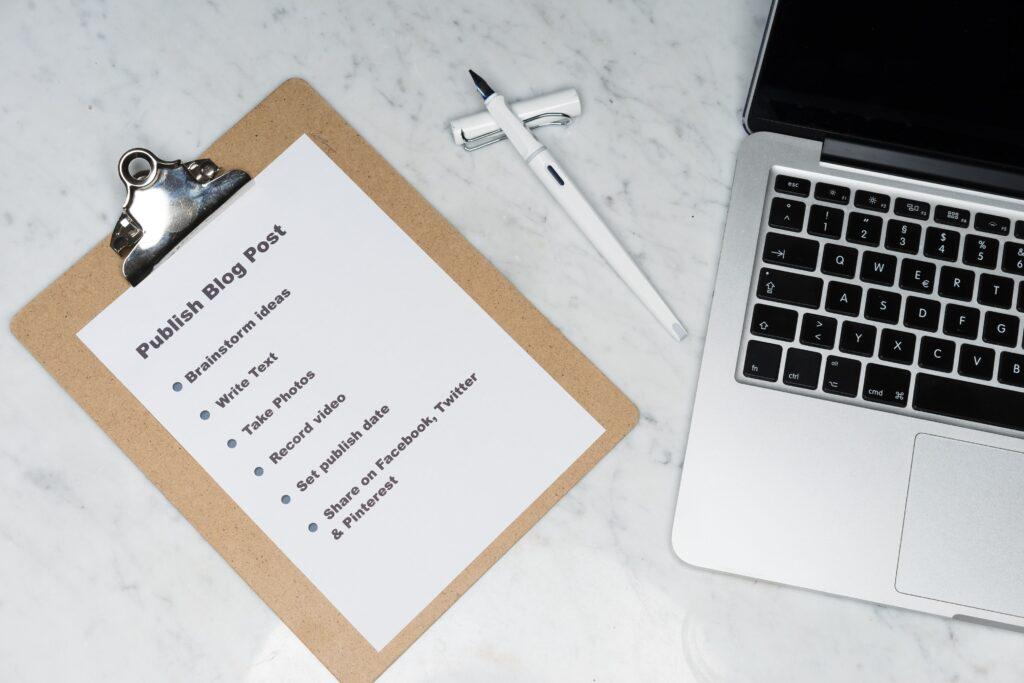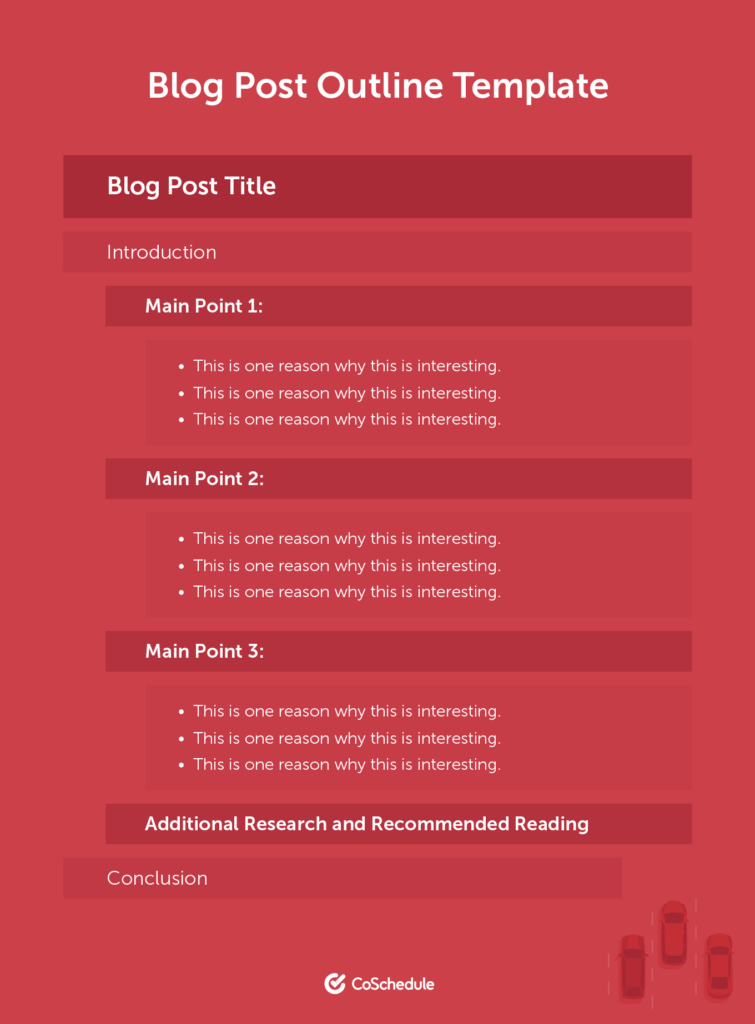Content writing is a creative process, first of all. But it doesn’t mean that it cannot benefit from a little structure and systematic approach. I feel like a lot of bloggers underestimate the benefits of skeleton outlines in their everyday work.
Why? Well, it is hard to say for everyone, but I think a lot of them do not like skeleton outline writing since their college years.

Working on an outline might seem too academic and boring at first sight. But, it is still an excellent way to write faster, more efficiently, and provide better content for readers.
If you want to know how to implement a skeletal outline in your blogging, let’s start with the basics.
What is a skeleton outline?
To put it simply, a skeleton outline is a breakdown of the future post. It is a lot like a plan of what you are going to write with a specific structure.
A great example of a skeleton outline is a table of content of any academic publication or non-fiction book. The table of content, in this case, is very particular and describes what each part of the text is about.
An outline helps a writer to achieve several goals, starting with breaking down the big task into smaller parts. I always create a skeleton blog outline before writing a post or article because it helps me to be a better writer.
And the best part is that it can be used for any writing type, whether it is an article, press release, essay, or blog post. The difference lies only in the structure of each of them.
In their blog posts that cover the same topic as you are reading now, Coschedule has created a blog post outline template. You will find an outline or, as it is also called, a skeleton or skeletal outline on the picture below.

I do not want to repeat others or tell you only some theoretical information about how important an outline can be when we talk about crafting a blog post after you have already come up with a topic idea and will move forward to my personal thoughts and experience.
For me, a blog outline serves as a guide on what I’m going to cover and in what order. It is also a perfect way to get rid of writer’s block and fear of a blank page. Like with a blog content writing plan, with a skeletal outline, you’ll never have to stare at the blank screen, thinking about what to write next because you have a plan.
Why skeleton outlines are important?
There are several quite crucial benefits of starting with an outline.
- It helps to write faster. When you have a plan, you know exactly what research you need to do and what type of information to look for. It works as a compass. It also helps to figure out the lengths, breakdown, and general idea of the piece. And you can work from section to section, not necessarily in the correct order.
- An outline adds up a logical structure. Logical flow is extremely valuable for good writing. And readers appreciate it, as it is much easier to follow something consequential. An outline gives perspective and helps to reorganize your ideas in the most powerful way.
- It helps to break down a task into smaller steps. It helps to stay motivated and inspired. Huge tasks are stressful and it is much easier to work on one part at a time.
- A skeleton outline makes your writing efficient. The more you use it, the easier and faster it gets to create a skeleton outline. Texts always follow approximately the same structure. In a couple of times, you’ll know exactly where to start.
- It helps to build stronger argumentation. Always start with the strongest points and deliver them one by one.
My method of using skeleton outlines for blogging
Now, let’s get to practice. I’ll guide you through my process of creating a skeleton outline with the example of my blog post on humor.
1.
Start with a title. Titles are important, every writer knows that. Ensure that it is specific, works for your blog, includes keywords, and is not too long.
In my case, the title is “Usage of humor for your business. Funny but serious”. It is catchy, SEO-friendly, and shows the reader what the subject of the post is.
P.S.
After reading the article, you can look at the final “Usage of humor for your business. Funny but serious” article that was written using the method I’m showing in the article.
2.
Research the subject and analyze what is extensively covered and what is missed. Consider what points you want to address based on your experience and knowledge.
Your personal experience is king, do not be afraid to mention several points from your personal stories or your friends’ experience in your initial blog outline draft. That WILL BE useful, believe me, even if you’ll decide to remove some of them in your final skeleton.
3.
Write down the main points of the article. It is time to brainstorm ideas. Write them down without particular order. Think about what you want to cover and what takeaways will be there for the audience. Put them one by one.

For example, my ideas for the post were:
- Why the humor is used in marketing;
- How often do businesses use humor;
- What are the benefits;
- What are the risks;
- Which techniques can a blogger use to create humorous content;
- Can a brand be serious while using humor in a marketing campaign;
- Importance of humor in communication and everyday life
- Examples of successful use of humor in business;
- Examples of fails;
- Types of humor techniques;
- Practical advice on how to be funnier in your writing.
4.
Combine them into larger sections. Now it is time to rearrange them in a logical order and in large groups. Some of the ideas are smaller; others are going to take a full section.
Define the bigger and most important points and add smaller aspects to them. Hubspot has clearly explained how to make larger outline sections in detail, so do not hesitate to have a look. Ready to get a sample of the skeleton outline?
My personal blog outline template:
- Introduction
- Importance of humor in communication and everyday life;
- Why it is used in marketing
- Benefits of Incorporating Humor in Content Marketing;
- Statistics;
- List of benefits;
- Risks of Incorporating Humorous Strategy in Business;
- Funny but Serious: Humor in Business and Blogs
- Usage of humor in your business blog and How to Do it;
- General tips on the usage of humor;
- Techniques to Make Your Blog Funnier;
- Example of successful usage;
- Examples of fails;
- Examples of How to create funny content
- Practical advice on how to be funnier in your writing.
- Business Writing Humor and Being Serious
- Can a brand be serious while using humor in a marketing campaign?
- Summary
5.
Go through the outline and make changes. Maybe replace some points or add marks like “find statistic data” or “link to research”.

If there is no urgency, I would also suggest you leave the outline for a blog post for one day. Take a nap or spend your time with friends and then recheck your outline with fresh thoughts. This will help you to gain some new ideas before you have started writing.
6.
Include the links to the sources you are going to use for each section. It will surely help you once you’ll start drafting your blog post. You can also add keywords to the subtitles.
In my opinion, it will help you from the beginning, but sometimes it doesn’t make sense because of the high chances that you’ll rewrite headings and subheadings during the writing process. Therefore, this trick is up to you 😉
Hoooray!
Okay, let’s go! Now you are ready to start writing, following your astonishing outline skeleton.
Skeleton outline is extremely helpful in any type of writing. Even when you make a writing sample, you can use an outline before writing the final draft.
It organizes thoughts and ideas, helps to write faster, and creates a logical flow.
At the same time, it helps to overcome writer’s block as you always have a plan on what to cover next.
If you have some personal methods that might be useful for my readers, kindly share them in the comments. I’ll be glad to find some new and unusual ways.
- How to Use AI to Write Blog Posts?Harnessing AI to write blog posts can significantly streamline content creation, enhancing efficiency and consistency across articles. By using AI tools, bloggers can generate initial drafts, refine content for SEO, and maintain a consistent publishing schedule, effectively boosting engagement and search engine visibility.
- How to Write a Blog Post Quickly? This is the Question!Writing a blog post quickly is all about using effective strategies. By organizing your thoughts, setting clear goals, and utilizing helpful tools, you can produce high-quality content efficiently. If you need assistance with content writing, reach out via the contact form on this website.
- Scouting Talent: My Two Cents on Where to Find Stellar Blog Writers!Unravel the mystery of finding the perfect blog writer for your needs with our comprehensive guide. Explore top platforms for hiring freelance writers and learn from the pros about their best practices. Plus, gain insight into the world of blog writing, costs, and why you might consider hiring a professional team.
- Where To Find Free Images For Your Blog: 10 Best WebsitesAre you searching for ways to add visually-appealing images to your blog without breaking the bank on expensive stock photos? Our article offers a detailed list of websites where you can find top-quality images for free, as well as valuable advice on how to select and incorporate them into your blog content. Whether you need striking nature photos or authentic human portraits, we’ve got you covered. Start crafting captivating blog posts today!
- Content is King, But Editing is the Crown: Why Marketers Need Copy Editors?In the fast-paced world of marketing, producing high-quality content quickly is a must. But in the rush to get content out the door, mistakes can happen. That’s where copy editors come in. By reviewing and revising content, they ensure that it is accurate, engaging, and on-brand. In this article, we explore why copy editors are essential for marketers, and how they can help improve the quality and effectiveness of your written content.
